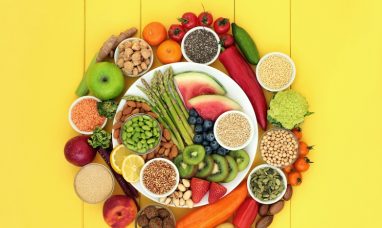In times of economic uncertainty, consumer staples often shine as defensive stocks due to their resilience. As the high-flying tech stocks that drove the first-half market gains to ease off amid renewed macroeconomic concerns, it’s an opportune moment to examine potential prospects in well-established household names in the defensive sector.
Among these stalwarts, General Mills (NYSE:GIS) and Kraft Heinz Company (NASDAQ:KHC) stand out as major players in the global food industry. With market capitalizations exceeding $42 billion each, these companies manufacture and distribute an array of packaged foods like cereals, snacks, dairy products, sauces, and cheese.
Nonetheless, distinctive differences in their financial performance, growth potential, and dividend yields set General Mills and Kraft Heinz apart. So, which one presents a stronger defensive investment case? Let’s delve into the details.
General Mills: Analyzing Performance Metrics
General Mills (NYSE:GIS), a prominent global producer and promoter of branded consumer foods like Cheerios, Yoplait, Nature Valley, and Häagen-Dazs, also boasts a pet product segment featuring Blue Buffalo offerings. Operating in over 100 countries, GIS sells through retail stores, online platforms, and food service channels.
GIS has exhibited a steady upward trajectory since late 2019, culminating in an all-time high of $90.19 in May 2023. Subsequently, its shares have retreated, underperforming the year-to-date S&P 500 Index ($SPX). Nonetheless, GIS has substantially outperformed the S&P over the past two years.
The company owes its success to increased demand during the COVID-19 pandemic, strategic acquisitions, and innovations. Notably, GIS has maintained a robust dividend policy, presently offering a yield of 3.27%, surpassing the sector average.
A pivotal driver of GIS’s growth has been its acquisition strategy, expanding its brand portfolio, entering new markets, and capitalizing on synergies. Key acquisitions include Annie’s, Epic Provisions, Blue Buffalo, and Tyson Foods’ pet treats business. These additions have diversified revenue streams, bolstered margins, and tapped into rising consumer demand for premium, natural, and organic products.
GIS recently reported its quarterly results, revealing a net income of $614.9 million ($1.12 per share) on $5.03 billion in revenue for the quarter ending May 30. While this marked a 15.46% EPS increase from the prior quarter, it remained flat compared to the previous year.
Analysts foresee consistent earnings growth for General Mills, with a consensus estimate of 4.65% for the fiscal year 2024 and 5.33% for the fiscal year 2025. Of 17 analysts, 6 rate the stock a strong buy, 9 label it a hold, and 2 suggest a strong sell. This amalgamation of opinions yields an overall Moderate Buy rating, with a mean target price of $81.75, implying a potential 13% upside from current levels.
Kraft Heinz: Evaluation of Performance Metrics
Kraft Heinz (NASDAQ:KHC), a heavyweight in the food and beverage sector, boasts iconic brands like Kraft, Heinz, Oscar Mayer, Planters, Philadelphia, and Maxwell House. Operating across five segments – U.S., International, Canada, EMEA (Europe, Middle East, and Africa), and the Rest of the World – KHC occupies a prominent place in the industry.
However, KHC’s market underperformance gained momentum in early 2019, fueled by news of a significant $15.4 billion impairment charge. This coincided with a 36% dividend reduction, a sign of challenges.
Facing an SEC probe, lackluster sales growth, high debt levels, and operational inefficiencies, KHC’s dividend underwent three subsequent cuts.
The substantial impairment charge reflected the decline in the value of renowned brands like Kraft and Oscar Mayer. Moreover, it indicated that KHC had overpaid for its 2015 merger with Heinz, orchestrated by Warren Buffett and 3G Capital.
Despite touching a low of $17.38 in March 2020 due to the pandemic, KHC’s share price has rebounded partially thanks to improved earnings and cost-saving strategies.
For the quarter ending June 27, KHC reported a net income of $1 billion ($0.79 per share) on $6.72 billion in revenue. This translated to a 16.18% EPS increase from the previous quarter and a 12.86% growth from the same quarter the previous year.
Unlike General Mills, analysts anticipate KHC’s annual earnings growth to moderate. Consensus estimates predict 3.96% growth for the fiscal year 2023, followed by a more modest uptick of 2.77% for the fiscal year 2024.
Among 14 analysts, 5 advocate a strong buy and 9 a hold for KHC. This consensus yields an overall moderate-buy rating, with a mean target price of $41.92, suggesting an anticipated upside of about 22.7% from current levels.
GIS and KHC: Choosing the Stronger Consumer Defensive Stock
In a comprehensive evaluation, General Mills showcases superior long-term price trends, a consistent and sustainable dividend policy, robust earnings growth projections, and a proactive, successful acquisition strategy compared to Kraft Heinz.
While KHC has cut dividends three times since 2019 and experienced less stable price action, it offers a yield of 4.63%. However, its total return appears less appealing due to an 8% share price decline over the past year.
Kraft Heinz possesses the potential for improved performance and profitability as it recovers from past merger blunders. Nevertheless, the company confronts formidable challenges and uncertainties in the dynamic packaged food industry. To regain and expand market share, KHC may need to amplify investments in innovation and brand building.
For investors eyeing consumer defensive options, General Mills emerges as the favored choice. It presents more benefits and fewer risks compared to Kraft Heinz.
Featured Image: Freepik @ prostooleh















